The city of Xiamen (pronounced “Shamen”) is located on an island surrounded by a ring road, near to the beach. The island is in the South China Sea, in the South Eastern part of China, opposite the island of Taiwan. For the last two years I have been living and working here- and frankly I can’t believe my luck
Outside my Front Door is a series of posts by fellow travel bloggers who share what is … outside of their own front door
Ruth Sheffer is a teacher from the UK. She and her husband Dan left their jobs in Israel and set off to explore China.
Ruthie blogs at Piglet’s House where you can follow her life and travels in China and beyond
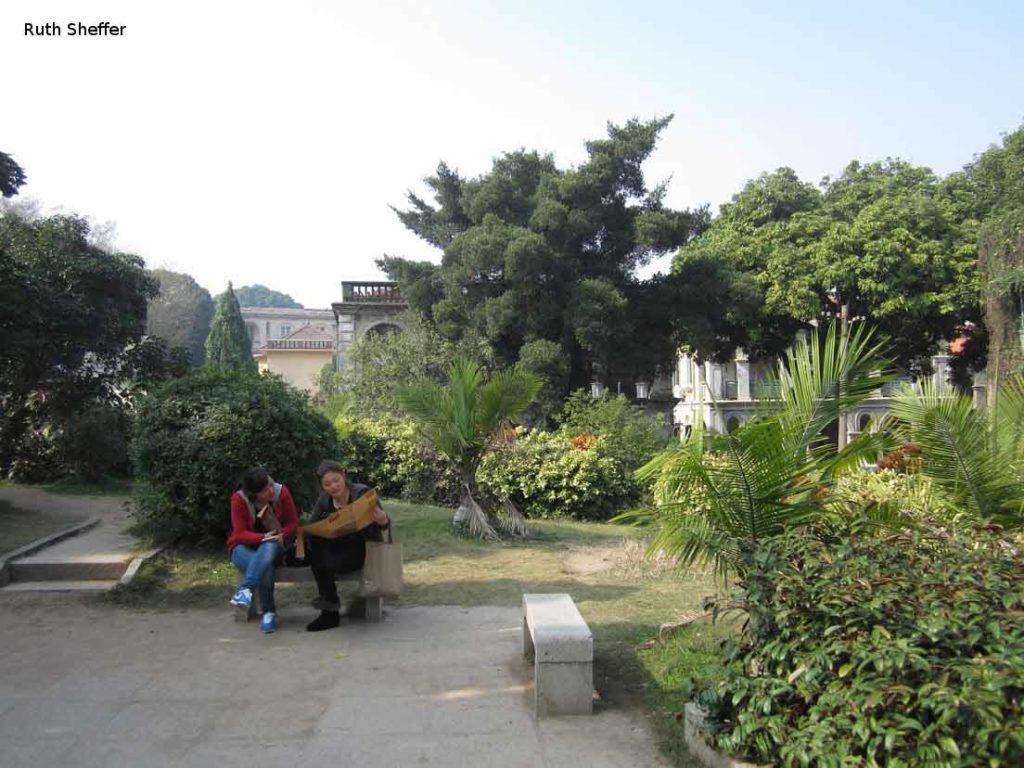
About Xiamen
Contents [hide]
Every day is another adventure, another mystery. I never know what exactly is going to happen, whom I am going to meet, or what I am going to eat. I have no routine, no time for boredom. For those of you not familiar, Xiamen is a very prosperous city of about 3 million people. I moved here after living in another province of China, mainly for the wonderfully balmy weather and lack of winter, but also because I had heard it was a good city for expats, with plenty of local colour, but also with “home comforts” such as modern shopping malls, availability of western foodstuffs and a great beach. I have a mix of Chinese and non-Chinese friends, of all ages. Nobody here cares that we are retired or that we are the same age as their parents or grandparents. Everyone wants to chat, to practice their English or to ask me about my “hometown”. Just a quick stroll down the street will bring me face to face with some strange or unusual sight, such as a woman with a giant turtle on a blanket, selling I have no clue what.
The city is a mix of old and new, traditional and modern, gleaming glitzy office buildings and malls, and grimy slummy back streets. You can walk along the main drag with stunning architecture and then turn into a back alley and see people cooking the simplest of street foods, or selling fresh fruit and vegetables on a blanket. Small children run around and shout “Hello Hello” as we walk by.
Things to Do in Fujian
One of my favourite pastimes here is simply to go downtown and walk along the beach. There are always a million things there to see and we frequently get smiled and waved at by locals and even asked if we want to be in their wedding photos. Despite the fact that there are other foreigners living here we are still treated like celebrities. It is easy to make friends, even if your language skills are limited. Smiling and nodding are great universal connectors. We can stroll in the many beautiful parks in Xiamen, or rent a bike or tandem on the Huandao buy cialis online reviews Ring Road that runs all the way along the beach, or just stroll on the boardwalk, and maybe we will even glimpse.. a camel there.
Many people ask us what we eat here, and if we can use chopsticks. Well as far as that goes, yes using chopsticks becomes second nature after a short while. We frequently eat out with friends, as most Chinese eat out- the kitchens here are really small and people don’t have much time to cook at home anyway, and the food in the local tiny street restaurants is cheap and varied. A popular food is hotpot, a heated bubbling cauldron of soup in the middle of the table to which you add a variety of vegetables, noodles, fish, meat as you wish, stir it all around and dip in as you wish. All the people at the table share this. This is a very social dish and the meal can continue for several hours. We love going to the local markets and checking out the exotic fruits we can find there, some of which we can identify but others are unfamiliar. And by the way a large decorated basket of fruit is a popular gift when visiting friends.
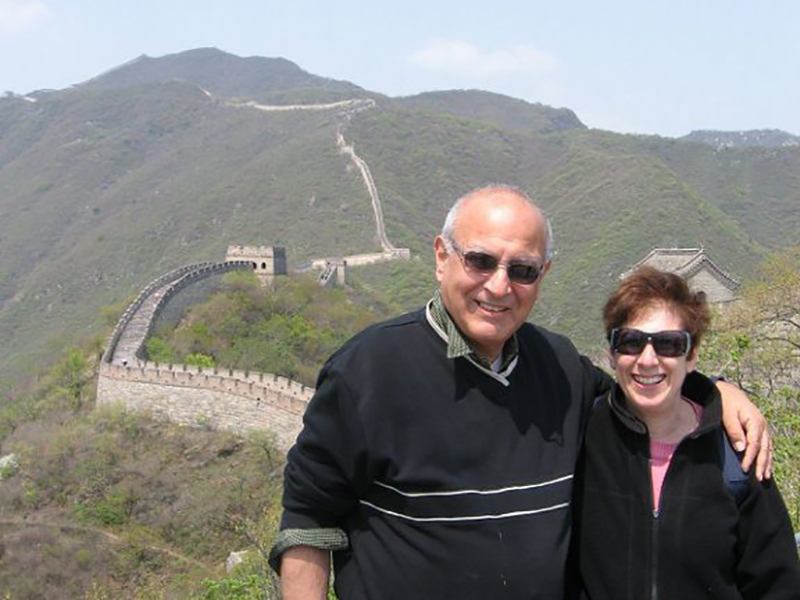
A little way out of town and you come to unspoilt villages where Fujian people live as they have done for hundreds of years. We can drive out of the city and hang out with the Hakka Minority people whose villages are scattered all around Fujian province, and who live in circular communal “Earth Houses” designated UNESCO Heritage sites.
These houses were built in a circular shape to protect people from attacks by bandits or wild animals. Many families live in one house, and the middle communal area is for cooking, making handicrafts or selling things, or for the children to play. Some of these villages are tourist sites but many more are more isolated and have never seen people from outside the province, let alone from abroad. You can stay overnight and experience the quiet and peace of the ancient life style, and partake of Hakka traditional foods.
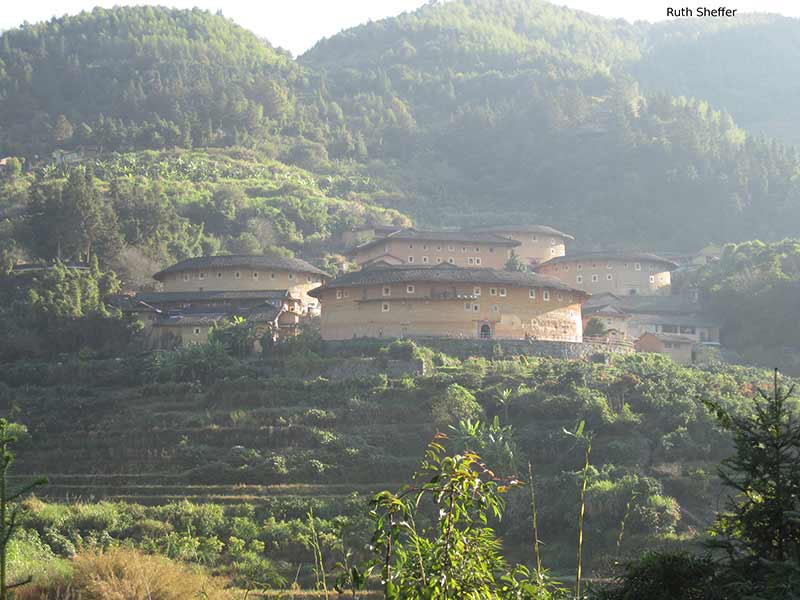
One of the most popular places to visit in Xiamen is the island of Gulangyu. It is a small island reached from the main island by a 5 minute ferry ride. The island is completely free of cars and there are many beautiful old colonial buildings there and a general feeling of peace and quiet (unless you visit during a Chinese national holiday when it is swamped with local vacationers). The island also boasts a large proportion of musicians, and two museums, one an organ museum and the other a piano museum. Just strolling around the winding alleys and looking at the buildings, or sampling the local seafood makes for a great day out.
Follow more of Ruthie’s travels on Twitter , Google Plus and of course her site Piglet’s House.

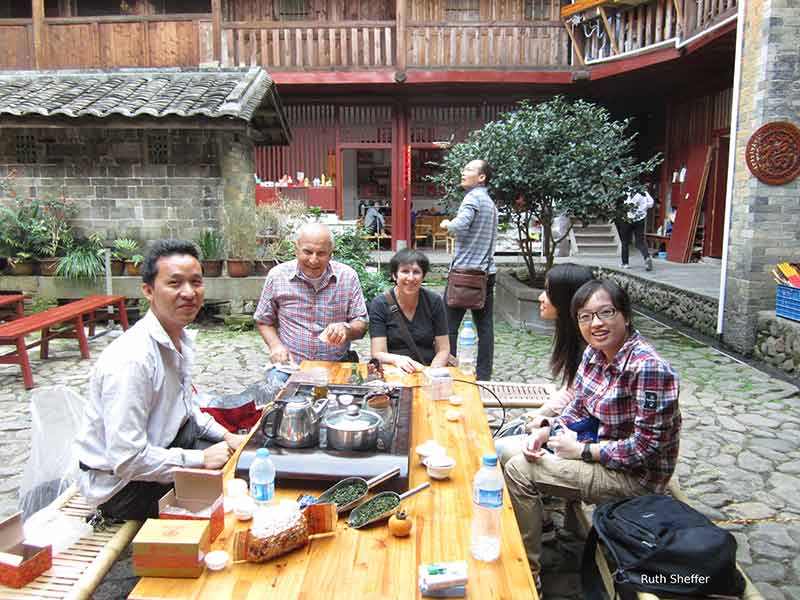
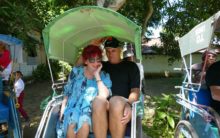





Nice post. I learn something totally new and challenging on websites
I stumbleupon on a daily basis. It will always be helpful to
read articles from other authors and use something from other sites.
Here is my webpage … translate.google.cn
You hear such negative things on tv about China, I’ve never wanted to go, in fact would be afraid to do so. The terrible poverty, the sweat shops, the terrible treatment of women. YOu make it sound totally different.
A-Z
It sounds like you are in a perfect, warm spot Ruth. Maintaining the celebrity/foreigner status is something which I think will ease with time as more and more foreigners are visible. I certainly found this with Shanghai.
The novelty was still there though when I went to visit the Etrampers in Dongguan (sp ?) a few months ago.
I suspect that lady with the turtle was actually selling the turtle. The Chinese seem to eat anything and everything. I suppose you have to with so many mouths to feed.